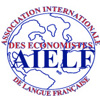Competition in the retail distribution of liquid fuels : Exploring the spatial dimension
Pedro CASTILL
Université du Chili – Chili
Programme de Master en Économie Appliquée
pcastillonunez@gmail.com
https://orcid.org/0009-0004-2079-8344
Abstract : This work aims to study the level of spatial competition among the existing gas stations in the retail distribution market of liquid fuels, based on the comparative analysis of their geospatial positioning and their influence and price variations in the national market. In the case of Chile, the industry is characterized by a high concentration in the number of suppliers and vertical integration with the wholesale distribution, transportation and storage segments, which makes the competitive analysis important. In addition, there is a great differentiation of products in terms of geographical location, which makes spatial analysis essential. Thus, we first analyzed the impact of the number of nearby stations, the same network, and a rival or independent network. The results are configured according to two approaches. The first one concludes that the numerical results are consistent in the price dynamics and territorial positioning of the stations, as it appears that independent stations have a negative effect on the price level within a 20-minute radius, with an average network-action of 0.19%. Likewise, there is a greater impact on the distribution of 93-octane gasoline and diesel than on 97-octane gasoline, as the diesel and 93-octane segments are the most competitive in the industry, and in the context where independent stations participate the most. In the second model, the results show the dominant role of the Copec company : this network has the greatest negative influence on the price level of its rivals. As in the first model, the results vary by fuel type, with the role of the 97-octane gasoline networks being the most important. Results are heterogeneous at the regional level, higher in densely populated geographic areas compared to southern areas and far from major urban centers.
Keywords : retail fuel distribution, linear regression analysis, geospatial dimension, marketing.
JEL classification : Q31, Q32.
DOI : https://doi.org/10.18559/RIELF.2023.1.9

